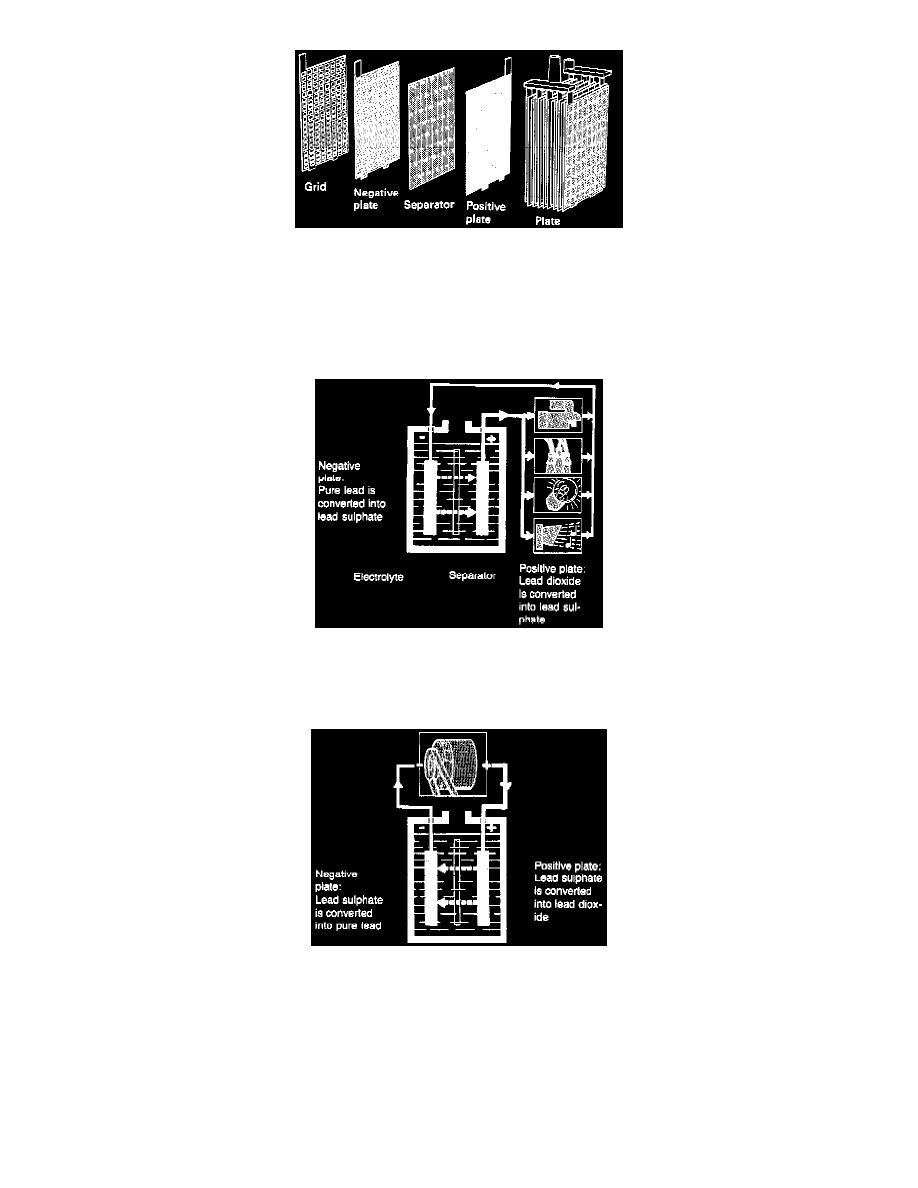940 L4-2.3L SOHC VIN 88 B230F (1992)

Inner construction
The cells consist of positive and negative plates which are welded in groups to pole bridges. The plates are kept apart by separators which are used to
avoid short circuits. Each cell contains such a combination of plates connected in series.
The positive and negative plates consist of lead grids which hold an active material (positive plate = lead dioxide, negative plate = spongy lead). The
lead grid carries the current. Each cell has a rest voltage of 2.12 V (fully charged, at 20 °C).
Discharge
During discharge the negative plate's lead (Pb) is converted into lead sulphate (PbSO4). The positive plate's lead dioxide (PbO2) is also converted into
lead sulphate. Sulphuric acid is consumed during the discharging process and water (H2O) is formed. The strength of the electrolyte is thus reduced.
Charging
On charging the cell the negative plate's lead sulphate (PbSO4) is converted into pure lead (Pb) and the positive plate's lead sulphate (PbSO4) into lead
dioxide (PbO2). Water (H20) is consumed during the discharge process and sulphuric acid (H2SO4) is formed. The strength of the electrolyte is thus
increased.
